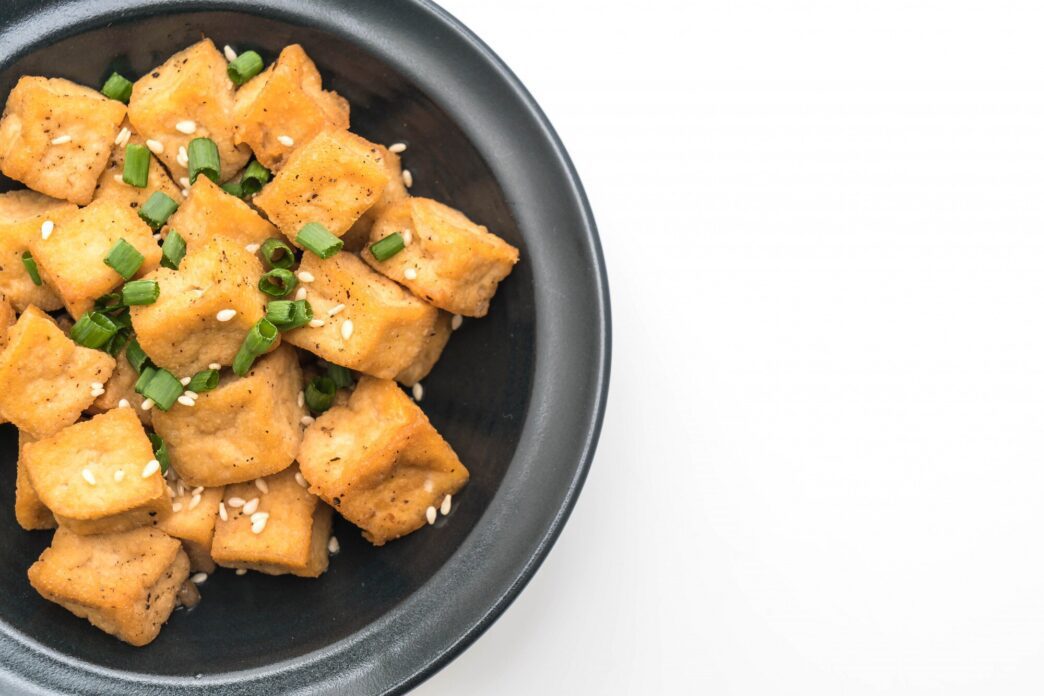A Quick Takeaway
The Story Behind the Trend
How to Make It Work for You
The Community View
Achieving perfectly crispy tofu without the need for deep-frying is not only possible but also a remarkably healthy and delicious way to enjoy this versatile plant-based protein. For anyone seeking to incorporate more nutritious, satisfying meals into their diet, mastering non-fried crispy tofu opens up a world of culinary possibilities. By understanding a few key preparation techniques and choosing the right cooking method, you can transform bland, soft tofu into a golden, textural delight, avoiding the excess oil and calories typically associated with traditional frying methods, all from the comfort of your home kitchen.
Why Opt for Non-Fried Tofu?
Choosing non-fried methods for preparing tofu offers significant health advantages. Deep-frying adds substantial amounts of unhealthy fats and calories, which can negate many of tofu’s inherent benefits. By baking, air frying, or pan-searing with minimal oil, you retain tofu’s lean protein content and essential nutrients while drastically reducing fat intake.
Tofu itself is a nutritional powerhouse, packed with complete protein, essential amino acids, iron, calcium, and manganese. It’s also a great source of isoflavones, which have been linked to various health benefits. Preparing it without frying ensures you get these benefits in their purest, healthiest form, making it an excellent choice for heart health and weight management.
The Foundation: Choosing and Preparing Your Tofu
The journey to crispy tofu begins long before it hits the heat. The right type of tofu and proper preparation are absolutely critical for success. Skipping these initial steps will almost certainly result in a less-than-ideal texture.
Selecting the Right Tofu
For crispy results, always opt for extra-firm or super-firm tofu. These varieties have the lowest water content, making them ideal for achieving a crisp exterior. Avoid silken, soft, or firm tofu, as their higher water content makes it nearly impossible to get them truly crispy without excessive frying.
Pressing is Non-Negotiable
Pressing tofu is the most crucial step in the preparation process. Tofu is packaged in water, and removing as much of this excess moisture as possible is essential. This allows the tofu to absorb marinades more effectively and prevents it from steaming rather than crisping during cooking.
To press tofu, you can use a dedicated tofu press, which is highly efficient. Alternatively, wrap the block of tofu in several layers of paper towels or a clean kitchen towel, place it on a plate, and top it with a heavy object like a cast-iron skillet or a stack of cookbooks. Press for at least 30 minutes, ideally an hour or more, changing the paper towels if they become saturated.
Flavor Infusion: The Art of Marinating
Once pressed, tofu is a blank canvas ready to absorb flavor. Marinating not only adds depth and complexity but also helps tenderize the tofu and contributes to a better crust. Don’t skip this step if you want flavorful, not just crispy, tofu.
A good marinade typically includes an acid (like rice vinegar, lemon juice, or lime juice), a savory component (soy sauce, tamari, or liquid aminos), a touch of oil (sesame, olive, or avocado), and various spices or aromatics (garlic powder, ginger, smoked paprika, nutritional yeast, or chili flakes). Allow the pressed tofu to marinate for at least 15-30 minutes, or for deeper flavor, up to several hours or overnight in the refrigerator.
Achieving Crispiness: Non-Fried Cooking Methods
With your tofu pressed and marinated, it’s time to choose your preferred healthy cooking method. Each offers a slightly different level of crispness and convenience.
Baking for Hands-Off Crispness
Baking is an excellent method for achieving consistent crispiness with minimal effort. After marinating, toss your tofu cubes or triangles with a tablespoon or two of cornstarch or arrowroot powder and a tiny bit of oil. The starch creates a thin, crispy coating.
Spread the tofu in a single layer on a parchment-lined baking sheet, ensuring pieces don’t touch. Bake in a preheated oven at 400°F (200°C) for 25-35 minutes, flipping halfway through, until golden brown and firm. This method is great for larger batches.
Air Frying for Ultimate Speed and Crunch
The air fryer is a game-changer for crispy tofu, producing results comparable to deep-frying but with a fraction of the oil. Prepare your tofu as you would for baking, tossing it with cornstarch and a light coating of oil after marinating.
Place the tofu in a single layer in the air fryer basket, working in batches if necessary to avoid overcrowding. Air fry at 375°F (190°C) for 15-20 minutes, shaking the basket every 5-7 minutes, until beautifully golden and crunchy. This method is incredibly fast and efficient.
Pan-Searing for Controlled Browning
For those who enjoy a hands-on approach and direct heat, pan-searing with minimal oil can yield wonderfully crispy results. Heat a non-stick skillet over medium-high heat with just a thin film of high-smoke-point oil (like avocado or grapeseed oil).
Add the tofu in a single layer, ensuring not to overcrowd the pan, and cook for 3-5 minutes per side, turning with tongs, until each side is deeply golden brown and crispy. This method allows for precise control over the browning process.
Tips for Tofu Perfection
To elevate your crispy tofu further, remember these key tips. Always ensure your tofu pieces are evenly sized for consistent cooking. Don’t be afraid to experiment with different spices and herbs in your marinade to match your meal’s flavor profile. A final sprinkle of nutritional yeast can add a savory, cheesy note.
Consider adding a glaze in the last few minutes of cooking, such as a sweet chili sauce, teriyaki, or buffalo sauce, for an extra burst of flavor and a glossy finish. This helps the sauce caramelize onto the crispy exterior without making it soggy.
Serving Your Crispy Creations
Crispy, non-fried tofu is incredibly versatile. It makes a fantastic addition to stir-fries, grain bowls, salads, and wraps. You can also enjoy it as a protein-rich snack, a topping for curries, or even as a healthier alternative to chicken nuggets for kids. Its satisfying texture and ability to absorb flavors make it a staple for healthy, plant-forward eating.








